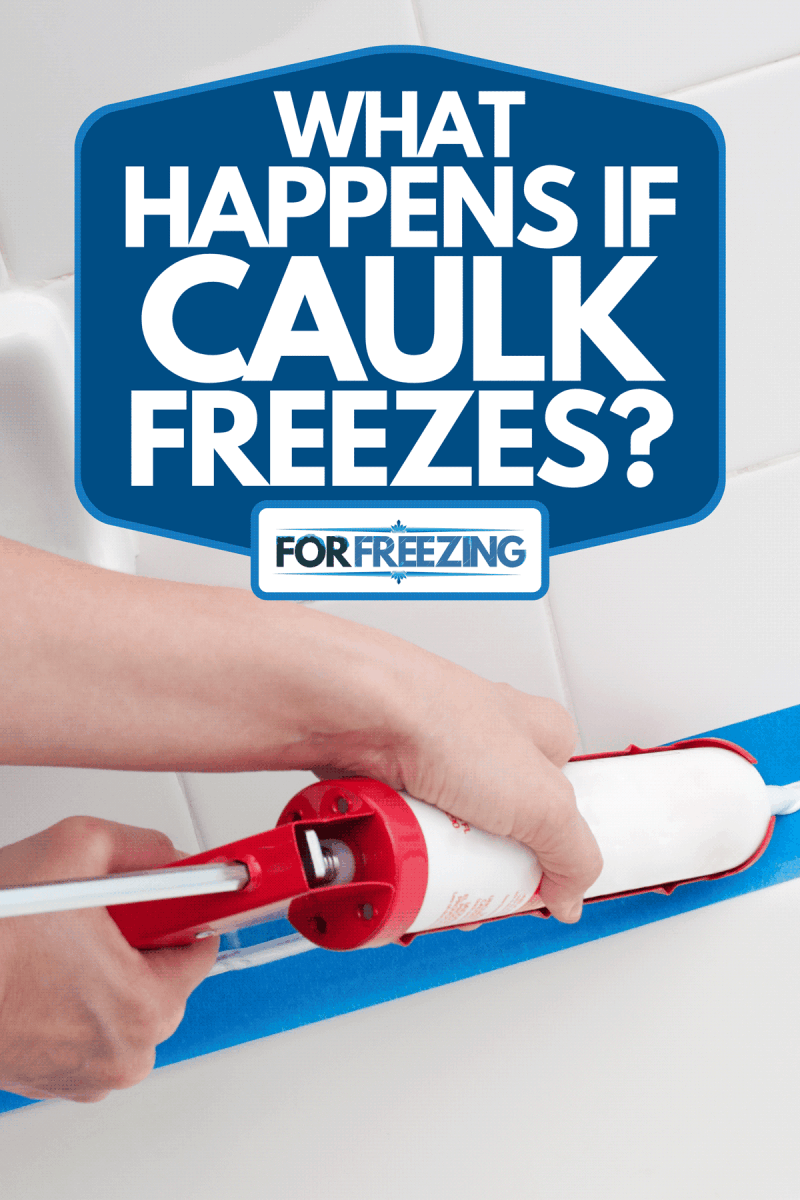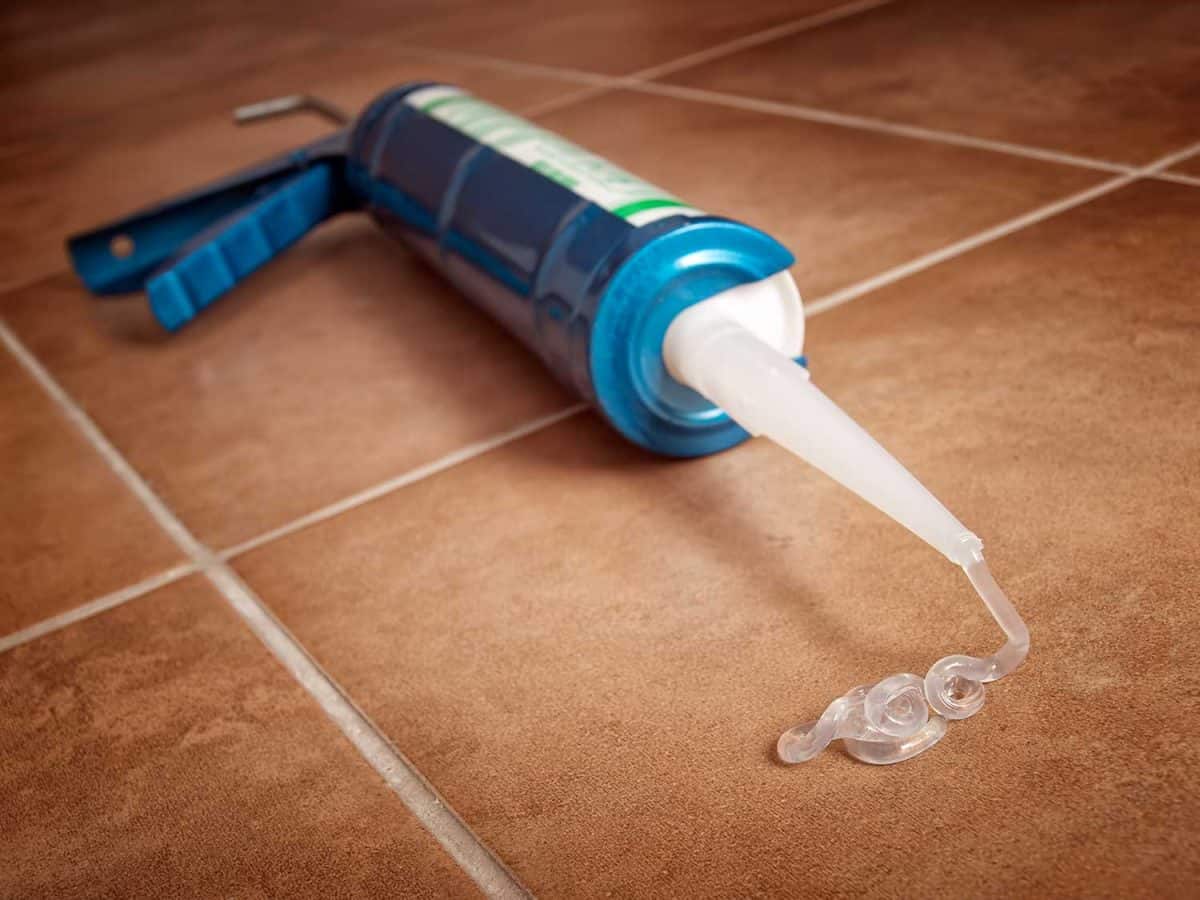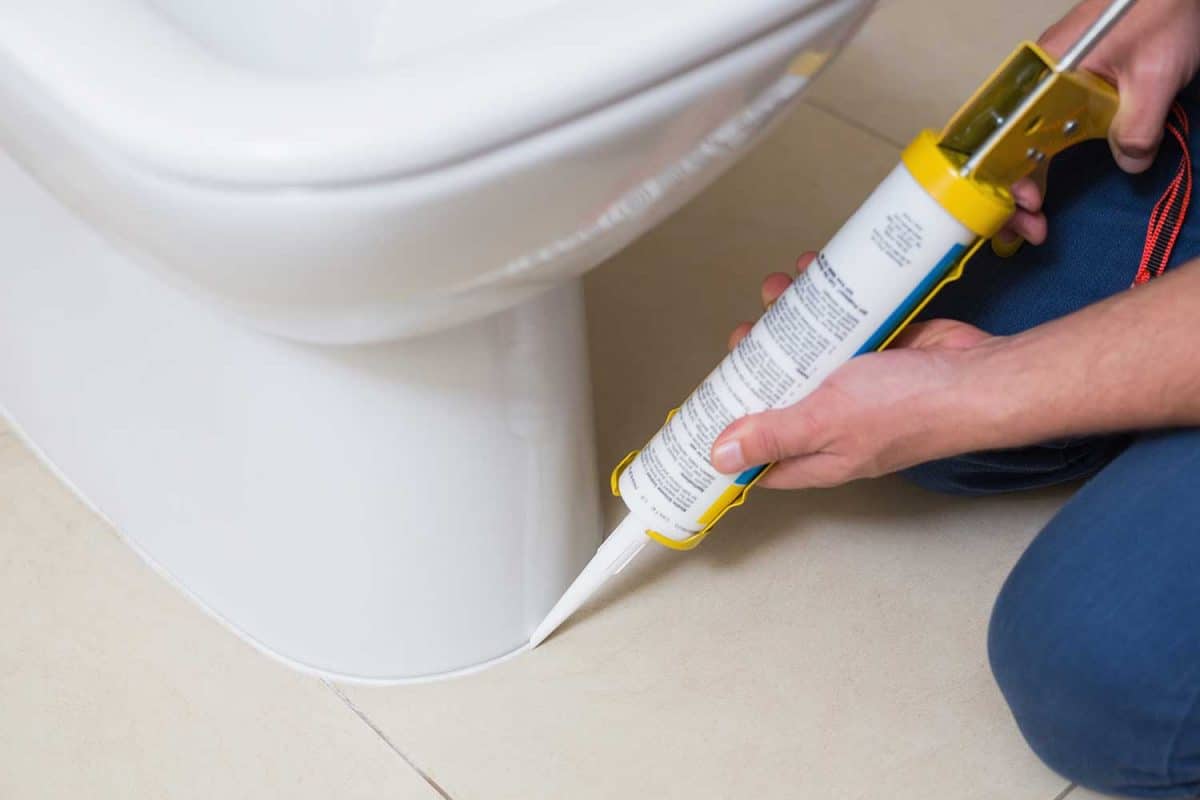Thinking you have done everything in the book to prepare for the winter season? Only to experience that cold air still seeps in seemingly unnoticeable cracks in your homes? Worry no more, one of the best solutions would be cold-temperature caulking. This poses a question, what would happen if caulk freezes? We’ve asked experts and this is what they have to say.
The exterior surface of frozen caulk solidifies while the interior takes a little while to cure. Once the interior hardens, it should eventually be fine but take note to monitor that the temperature would not dip below 32 degrees Fahrenheit. By doing this, it should be able to maximize the adherence and lifespan of the caulk.
Do you want to learn more about the types of caulk and guide in cold-weather caulking? Just keep reading!
NOTE: WE MAY GET A COMMISSION IF YOU DECIDE TO MAKE A PURCHASE THROUGH THESE LINKS. THERE'S ADDITIONAL NO COST TO YOU. CHECK THE BOTTOM OF THE PAGE FOR MORE INFORMATION.

Does caulk go bad if it freezes?
Frozen caulk could go bad. Luckily, there are a few ways to detect the occurrence. First, upon applying the caulk and nothing is coming out of the container, then the caulk has gone bad. Secondly, even if the sealant is squeezed out from the tube but the material coming out seems partially hard or pasty in texture, it has gone bad. Lastly, all forms of caulks emit a distinct odor, however, if it does not smell like it, the caulk has gone bad.
Caulks that have been frozen in storage should be disposed of because the effectiveness of the adherence reduces. Moreover, some caulks that have expired would be pumped easily from the tube but will lately fail to cure.
Is silicone caulk still good if frozen?

Silicone caulks are formulated to be flexible, elastic, and stable across many conditions, including heat and cold. Because of this reason, consumers would always prefer the use of this caulk, especially in cold-weather conditions.
Frozen silicone caulk could become very thick, rendering it unusable for sealing purposes. However, it could still be used if it thawed at room temperature. In addition, subjecting the material to extreme heat can reduce the lifespan of the sealant.
Can latex caulk freeze?
Latex is versatile enough to be applied in different forms of substrate or surfaces. In addition, the sealant could also be used in cold-weather caulking.
Latex caulk can freeze. But frozen latex caulk should not be subjected to a temperature below 32 degrees Fahrenheit. The material could disintegrate and break if the temperature is too extreme. Furthermore, too much freezing temperature could disengage the adherence between the substrate and the sealant.
What temperature should caulk be applied?
The adherence effectivity of a caulk often depends on the temperature upon application. Latex caulk is best applied in dry and ambient temperatures. However, it could be applied in cold temperatures as long as it does not dip below 40 degrees Fahrenheit.
On the other hand, silicone caulk has the widest acceptable range of application temperatures. It is stable at temperatures of up to 390 degrees Fahrenheit of continuous exposure and 575 degrees Fahrenheit for shorter periods of time. The sealant is still elastic at temperatures of about -20 degrees Fahrenheit.
How do you caulk in cold weather?
Frigid air seeping in those unnoticeable cracks and holes can be a pain to deal with during the winter season. Cold-weather caulking provides the best solution in plugging the gaps, cracks, and holes that were not detected during the summer. Listed below is an easy-to-follow guide that would describe the steps in cold-weather caulking.
Choose the right caulk
Choosing the right caulk heavily depends on several conditions. Several types of caulk, like latex caulk, is most effective in wood or plyboard substrate. Weather conditions can be a determining factor in what type of caulk to select. Some silicone caulk brands are stable at lower temperatures, making it a preference for cold-weather caulking. However, choosing the right caulk mostly depends on consumer preference.
Prepare the Surface
Preparation of the substrate surface plays a vital role in ensuring that the material will adhere completely. The process starts by making sure that the substrate is clean and dry for caulk to adhere properly. During cold-weather caulking, any material that surrounds the application area must be removed like ice. Keep in mind to make sure that the substrate is free from anything like dirt and debris.
Apply Caulk
Lastly, caulk must be applied quickly if the preparations are complete. Caulk must be applied evenly on the substrate with the use of a small hawk and finishing trowel. It is important to wear appropriate protective equipment to increase the safety of the person performing the caulking, especially in cold-weather conditions. The caulk must be dried through the use of a heating tool during cold conditions. In this way, you could ensure that the sealant would adhere to the substrate completely.

What temperature does caulk cure?
It is extremely important that caulk cures eventually after application. Temperature plays a significant role in enabling this to happen. The ideal temperature ranges for curing caulk would be between 40 degrees up to 80 degrees Fahrenheit. This range of temperature would allow the caulk to harden correctly and adhere to the surface effectively.
In curing the caulk during cold conditions, make sure that the temperature would not dip below 32 degrees Fahrenheit. To effectively cure the caulk, place the container at room temperature of about 70 degrees Fahrenheit for 24 hours so that the caulk will come out more easily during application. In addition, using a heating tool would allow for less time consumption and effectiveness of the adherence.
How do you store caulk after use?
After finishing an arduous task of caulking, you are faced with the dilemma of how to store the remaining opened container of sealant. It would be okay if it only costs a little but the caulk you bought is in the pricy range. Here are ways to store leftover caulk:
Use a Golf Tee Or Nail
Pushing a golf tee or a nail into the end of the tube will help keep the caulking from getting bad. The caulk seal isn't really airtight but it would still keep it in good condition for 2 weeks.
Wrap the Tube
The outside tube should be cleaned, then wrap it tightly by using plastic food wrap. Lastly, finish up by wrapping it with an electrician's tape.
Attach a Wire Nut
Create a caulk plug by screwing a wire nut unto the end of the tube. Surprisingly, one can find a wire nut that seals the opening. They come in various sizes and you can find one that fits in your container.
Use a Screw-In Hook
Just put caulk on the screw part of the hook, then screw it into the open end of the caulking tube. The result would be an airtight container; however, you can reopen the tube by unscrewing it.
In Closing
Caulks can tolerate freezing temperatures, but guides and precautions must be effectively followed. This means that by doing these necessary things, one would be prepared when the situation arises.



